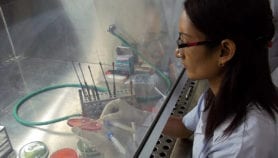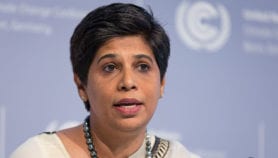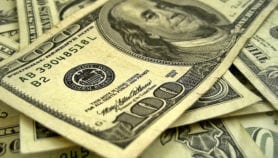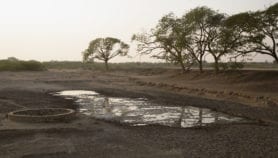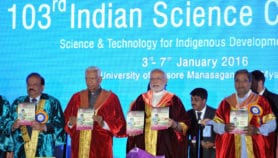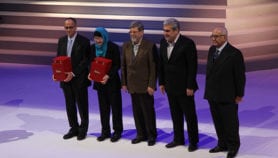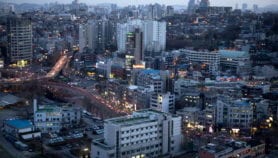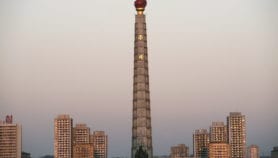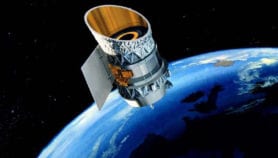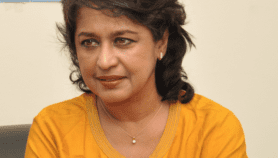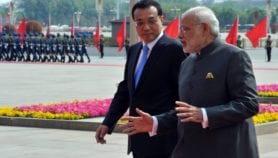01/04/21
COVID-19 spawns vaccine wars
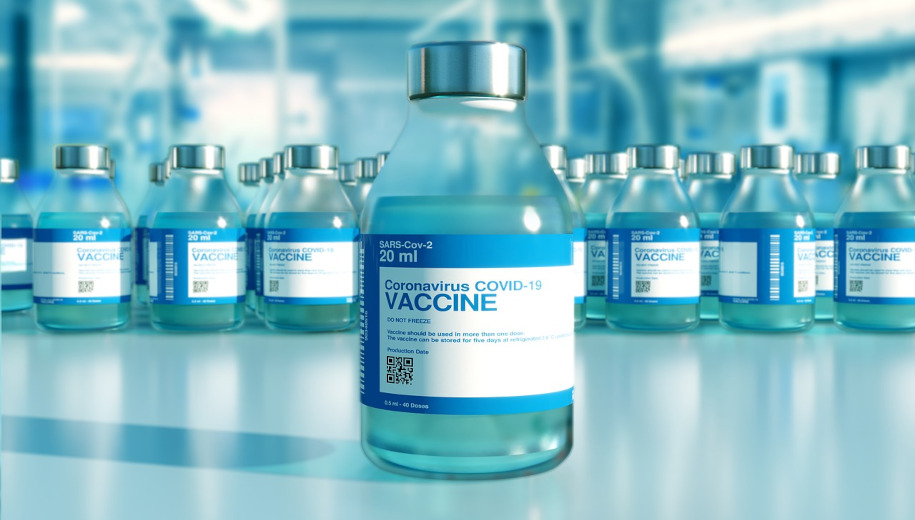
By: Ranjit Devraj, Meghie Rodrigues and Dann Okoth
Send to a friend
The details you provide on this page will not be used to send unsolicited email, and will not be sold to a 3rd party. See privacy policy.
[NEW DELHI] When Australia, India, Japan and the US — countries strategically allied under the so-called Quad (Quadrilateral Security Dialogue) — switched focus to fighting COVID-19, it was seen as one more of the several ‘proxy wars’ spawned by the pandemic.
The ‘Quad Vaccine,’ announced at a virtual summit of the leaders of the four countries on 12 March, is based on a vaccine developed by the US transnational, Johnson & Johnson, produced by India’s Biological E Limited, and funded by the other two partners. The plan is to churn out a billion doses by the end of 2022.
Vishnu Prakash, commentator on security issues and former member of India’s diplomatic corps, tells SciDev.Net that the Quad has a “focused agenda of raising the cost of misadventure in the region by any expansionist power”.
While Prakash and other commentators carefully refrain from naming any country as the focus of Quad, there is little doubt that the expansionist power in question is China.
Says Pankaj Mohan, a leading academic who specialises in Chinese and East Asian studies: “Chinese media have been vocal against the ‘Asian NATO’ and, notably, the Global Times on 13 March talked about COVID-19 vaccines being used to weaken China’s influence in the whole region.”
Srikanth Kondapalli, professor in Chinese studies at the Jawaharlal Nehru University, New Delhi, says that while China is acknowledged as ‘factory to the world’, India has long had an advantage when it came to the manufacture of drugs and vaccines so that it has a reputation for being ‘the world’s pharmacy’.
“India’s advantage starts with the fact that it was already producing 60 per cent of the world’s vaccines even before the COVID-19 pandemic unfolded,” says Kondapalli. “Domestically, India administers 50 million vaccine doses a year for different diseases in this country of 1.3 billion.”
India’s privately owned Serum Institute of India (SII), among the world’s leading manufacturers, easily entered into an early agreement to manufacture and stockpile Covishield, the Oxford University-AstraZeneca vaccine candidate, says Kondapalli. “For good measure, there was a backup candidate in Covaxin developed and manufactured by the local company Bharat Biotech.”
Significantly, says Kondapalli, Indian Prime Minister Narendra Modi took a personal interest in the development and early launch of vaccines, even visiting manufacturing units. India pledged early to supply vaccines to the WHO-led COVAX — an initiative meant to assist poorer countries access vaccines — as well as bilaterally to individual countries, and this soon led to competition with China in neighbouring countries such as Sri Lanka, Nepal and Myanmar, says Kondapalli. “China has deep interests in these countries but could not supply enough doses to them.
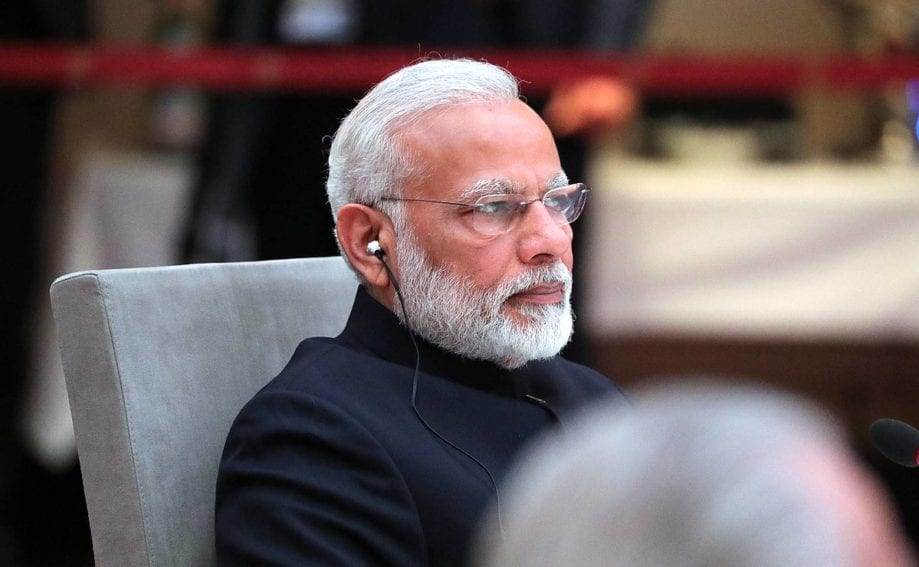
Indian Prime Minister Narendra Modi. Image credit: President of the Russian Federation (CC BY 4.0).
The exception is Pakistan where China enjoys a near monopoly allowing it to both supply and test its main vaccine CoronaVac made by Sinovac Biotech,” says Kondapalli. China’s other main vaccine manufacturer Sinopharm also deals to export vaccines to some 50 countries around the world.
Kondapalli says friction between the two Asian countries began over the use of the term ’China virus’ in India’s media to describe COVID-19. “India’s media is autonomous and then the term was coined by then US President Donald Trump — it took pressure from China before WHO began using the name COVID-19.”
India-China war averted
Worse than niggling issues like naming a virus, India and China came close to war amidst the COVID-19 crisis. Clashes that broke out in June along their long common border led to more than 24 deaths and both countries amassed troops and armour in the high Ladakh region until a disengagement was negotiated in February.
Rajeswari Rajagopalan, China expert and distinguished fellow at the Observer Research Foundation, a leading think tank based in New Delhi says that COVID-19 supply “quickly turned into power politics because of the security and strategic dynamics between China and India”.
“China has been doing plenty of outreach in India’s neighbourhood and has been trying to create a favourable narrative about its willingness to provide COVID-19-related assistance,” says Rajagopalan.
“But the speed with which India was able to manufacture, stockpile and supply vaccine doses to a large number of countries has created much international goodwill for India — especially at a time when developed countries stand accused of hoarding vaccines,” Rajagopalan says.
“The speed with which India was able to manufacture, stockpile and supply vaccine doses to a large number of countries has created much international goodwill for India — especially at a time when developed countries stand accused of hoarding vaccines”
Rajeswari Rajagopalan, Observer Research Foundation
“Questions have been raised about the safety of Chinese vaccines by African countries and Brazil,” says Rajagopal. “China’s official media gave full play to its vaccine offers while denouncing vaccines manufactured by other countries, including India — but that was not enough to quell safety concerns.”
In contrast, information on India’s vaccines is readily available on company websites. India has also not allowed domestic obligations to hamper pledges to support the needs of other countries through its “Vaccine Maitri” (Vaccine Friendship) programme.
Ashwini Kumar Choubey, junior minister for health, informed Indian parliament on 16 March that the government had supplied 58 million doses of COVID-19 vaccines to 70 nations.
Bangladesh, the biggest beneficiary, has received nine million doses and a state tour by Modi in March saw agreements for 30 million more doses and a free gift of 1.2 million doses. Other recipients in the neighbourhood include Bhutan, Nepal, and Myanmar. Further afield, Canada, Mexico, Saudi Arabia, Oman, Kuwait, UAE, Caribbean and South American nations like Brazil and the African countries of Kenya, South Africa and Rwanda are recipients.
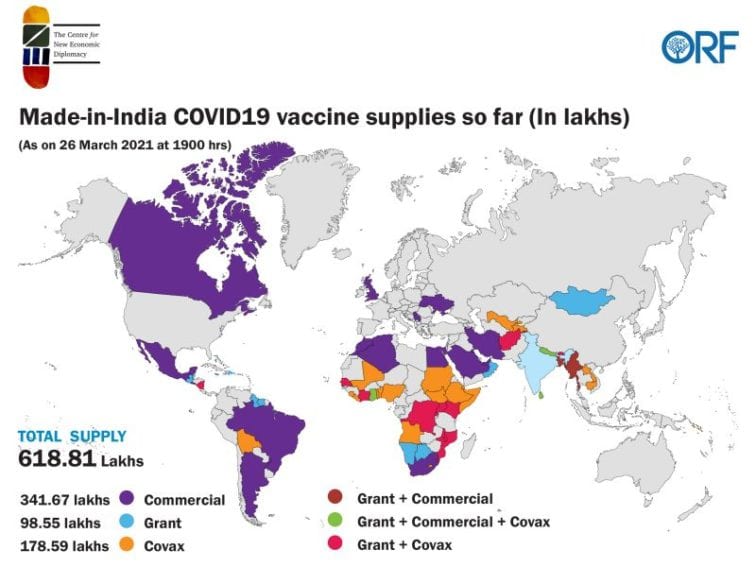


Vaccine supplies made in India. Image credit: Observer Research Foundation.
The Serum Institute of India plans to scale up production to a billion doses per year by the end of 2021 and other Indian companies are expected to add significantly to overall production. Bharat Biotech, for example, has contracted to sell 100 million doses of its COVAXIN in the US this year.
However, by mid-March, India was lagging on its domestic programme, having carried out just 54 million inoculations while exporting 60 million doses around the world. With the government facing local criticism as a new wave of COVID-19 infections flared up, exports were ordered to slow down.
Meanwhile, China has been pursuing aggressive vaccine deals. China’s foreign ministry spokesperson Wang Wenbin has said that apart from Pakistan, his country is providing vaccine aid to Brunei, Nepal, the Philippines, Myanmar, Cambodia, Laos, Sri Lanka, Mongolia, Palestine, Belarus, Sierra Leone, Zimbabwe and Equatorial Guinea.
According to a note issued by the Chinese consulate in Mumbai, Wang told a press conference last month that Chinese companies have been conducting joint vaccine R&D with several foreign partners. “Vaccines made by Sinopharm and Sinovac have been exported to countries including the UAE, Morocco, Indonesia, Turkey, Brazil and Chile where clinical studies have been conducted.
“China has been acting through concrete actions on President Xi Jinping’s solemn commitment of making COVID-19 vaccines, developed and deployed in China, a global public good, thus contributing to greater accessibility and affordability of vaccines in developing countries,” Wang was quoted as saying.
Situation in Africa
At least 19 African countries have lined up to receive Chinese COVID-19 vaccines, according to Chinese foreign ministry spokesperson Wang Wenbin.
Wang was quoted on state media on 22 February as saying that China had donated vaccines to Zimbabwe and Equatorial Guinea and that the country would use every resource at its disposal to help Africa fight the pandemic. The first shipment of 200,000 doses of the Chinese vaccine arrived in Zimbabwe on 15 February.
Apart from donations, China has signed bilateral deals with Egypt, Tunisia, Algeria and Morocco to export COVID-19 vaccines with the first shipment of Sinopharm vaccine arriving in Morocco in late January.
The developments follow promises made to African countries by Chinese President Xi Jinping last June at the China-Africa summit that Africa would benefit from the massive distribution of Chinese vaccines.
But some warn that the rush for Chinese vaccines could be counterproductive for the continent due to safety and efficacy issues, stemming from the fact that China accords approvals for its vaccines without publishing data on human trials in peer-reviewed journals.
Joachim Osur, technical director at Amref Health Africa and dean, School of Medical Sciences at Amref International University, Nairobi, says that Africa is desperate to secure vaccines to protect its population, especially amidst sluggish supply from the west.
“Chinese vaccines may be a cheaper, more accessible alternative, but at what cost?” Osur asks.
China’s leading COVID-19 vaccines, from Sinovac and Sinopharm, are still under assessment by WHO.
“These countries (Sub-Sahara Africa) rely on WHO to test and verify the vaccines for safety and efficacy in their behalf, so it would be dangerous for them to accept and use vaccines that have not gone through this process because they have no means to independently verify them,” Osur explains.
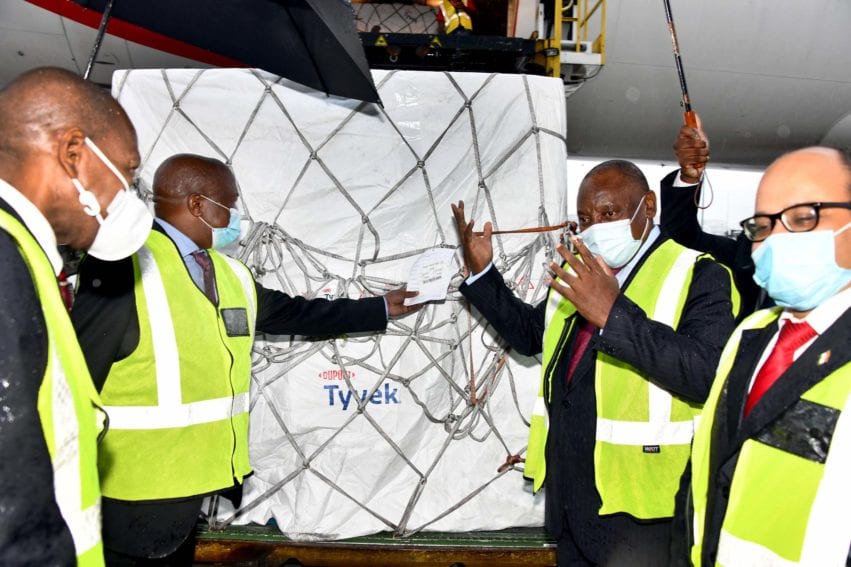


President of South Africa Cyril Ramaphosa and Deputy President David Mabuza receive the country’s first consignment of COVID-19 vaccine from the Serum Institute of India (SII). Image credit: GCIS (CC BY-ND 2.0).
Brazilian battleground
Brazil, which traditionally had good diplomatic ties with China, has become one of the main battlegrounds for vaccines for the two Asian giants.
While Brazilian president Jair Bolsonaro has been a fierce opponent of containment measures for the pandemic and vaccination in the country, he has shown particular disapproval of China’s CoronaVac, which is being pushed by his political rival and governor of São Paulo state João Doria.
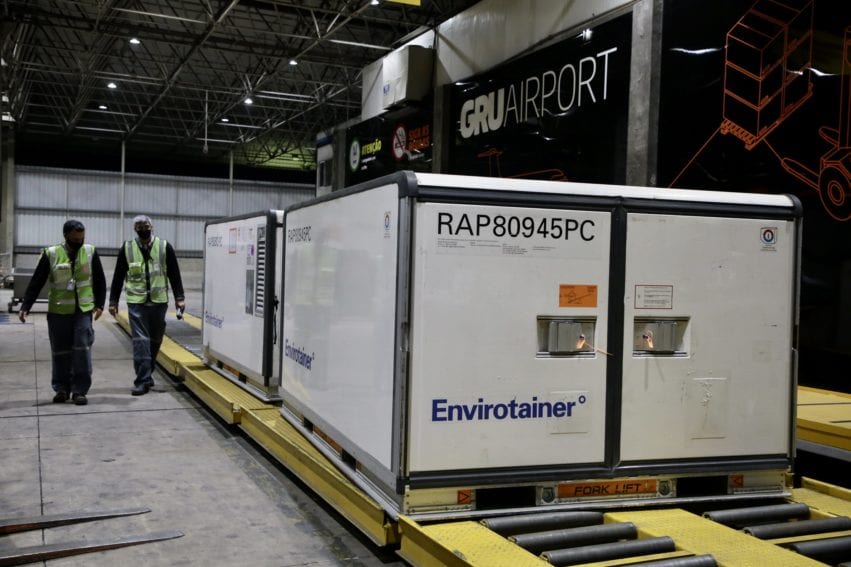


Doses of Sinovac arrive in São Paulo. Image credit: Governo do Estado de São Paulo (CC BY 2.0).
On January 17, the first Brazilian – a nurse – was vaccinated against the new coronavirus in the country. She received a dose of CoronaVac, produced in Brazil in a partnership between the Chinese company Sinovac Biotech and the Butantan Institute, a leader in the development and production of vaccine antigens in Brazil, located in São Paulo. This was perceived as a political defeat for Bolsonaro.
In September 2020 the Butantan Institute signed a contract with Sinovac for the delivery of 46 million doses of the CoronaVac by December.
In that same month, Fiocruz and AstraZeneca signed an agreement granting the Brazilian institution access to 100.4 million doses of the active pharmaceutical ingredient for final processing and quality control in Brazil, as well as general terms for technology transfer.
Developed by Oxford University with production and distribution rights by AstraZeneca, the Covishield vaccine started being produced in large scale in Brazil on March 8. Fiocruz’s aim was to produce 3.8 million doses in March. From March 29 to April 03, the Foundation plans to deliver 2.4 million doses of the vaccine.
While the federal government took part in the Fiocruz/AstraZeneca agreement, President Bolsonaro and the then minister of health Eduardo Pazuello shunned the Butantan-Sinovac agreement, struck by São Paulo governor João Doria, his former ally and now political foe.
Bolsonaro, who had openly criticised CoronaVac on several occasions, gave in by early January and signed a provisional measure to allow an agreement between Butantan Institute and the Ministry of Health granting 100 million doses of the vaccine to be incorporated in the National Immunisation Plan – which includes both Covishield and CoronaVac.
By February 2021, the Foundation had received two million ready-to-use doses from the Serum Institute of India. Fiocruz expects to receive the active ingredient to produce more than 100 million doses by July. In the second semester, the Foundation expects to produce another 110 million doses with technology for in-country production of the active ingredient. Some 2,000 volunteers took part in the tests for Covishield conducted by the Federal University of São Paulo in 2020.
Besides Covishield and Coronavac, Brazil has recently signed agreements with Precisa Medicamentos/Bharat Biotech (for the acquisition of 20 million doses of Covaxin) as well as Pfizer, Janssen, Sputnik V and adhered to WHO’s Covax Facility. States, municipalities and the private sector are allowed to buy vaccines independently.
Gonzalo Vecina Neto, professor at the Faculty of Public Health at the University of São Paulo and founder of Anvisa, hopes the negotiations for more vaccines will be successful. “The doses we have are enough only up to January 2022 — if we have more vaccines, we can finish vaccinating the population faster. And it’s also important to think of younger people and children, who are not included in the vaccination plan for now,” he tells SciDev.Net.
Covishield clots
But the mother of all COVID-19 vaccine proxy wars has to be the one being fought over Covishield. Developed by the University of Oxford and the British-Swedish company, AstraZeneca, the vaccine’s deployment appeared clouded by the UK’s traumatic withdrawal from the EU, which became final on 1 January.
Right from launch Covisheld became the subject of claims and counterclaims between the UK and EU over efficacy and safety. On 25 January, the German newspaper Handelsblatt claimed that the vaccine’s efficacy was only eight per cent among the elderly, ignoring data to the contrary published in The Lancet.
That was followed by several European countries suspending the use of Covishield over fears that the vaccine was responsible for the development of blood clots in recipients.
Manu Raj, a leading epidemiologist based in Kerala, India, commented that the suspensions were ill-advised as “no strong biological explanation was provided as to why the vaccine would cause a blood clot. Serious blood clots are a common feature of severe COVID-19 infection which can be fully prevented by the same vaccine”.
No sooner had the blood clot issue been resolved, with EU regulator, the European Medicines Agency, declaring Covishield safe, another row blew up — this time over the vaccine’s supply to the EU.
Under the terms of a contract with AstraZeneca, the UK had priority claim to Covishield doses at units in Oxford and Staffordshire, though the EU saw that as restrictive and violative of pledges of vaccine supply.
On Wednesday (24 March), the UK government and the European Commission issued a joint statement saying they were working on a solution. “Given our interdependencies, we are working on specific steps we can take — in the short, medium and long term — to create a win-win situation and expand vaccine supply for all our citizens.”
“In the end, openness and global cooperation of all countries will be key to finally overcome this pandemic and ensure better preparation for meeting future challenges,” the joint statement said.
“In the end, openness and global cooperation of all countries will be key to finally overcome this pandemic and ensure better preparation for meeting future challenges”
Joint statement of the UK government and the European Commission
But, the lack of global cooperation was most palpable in the differences that surfaced at the WTO over intellectual property rights, including patents on COVID-19 vaccines. On 2 October, India and South Africa asked the WTO to allow waivers of intellectual property rights on vaccines and technologies related to the pandemic. At least 100 countries have since supported the proposal.
According to Médecins Sans Frontières (MSF), developed countries, especially the EU, UK and the US and bodies representing the pharmaceutical big business have opposed any waiver as potentially counterproductive.
Christos Christou, MSF International President said in a 9 March press release: “Countries must stop obstructing (the proposal to WTO) and show the leadership required to deliver on the ‘global solidarity’ they have so often declared during this pandemic.”
This piece was produced by SciDev.Net’s Asia & Pacific desk.



